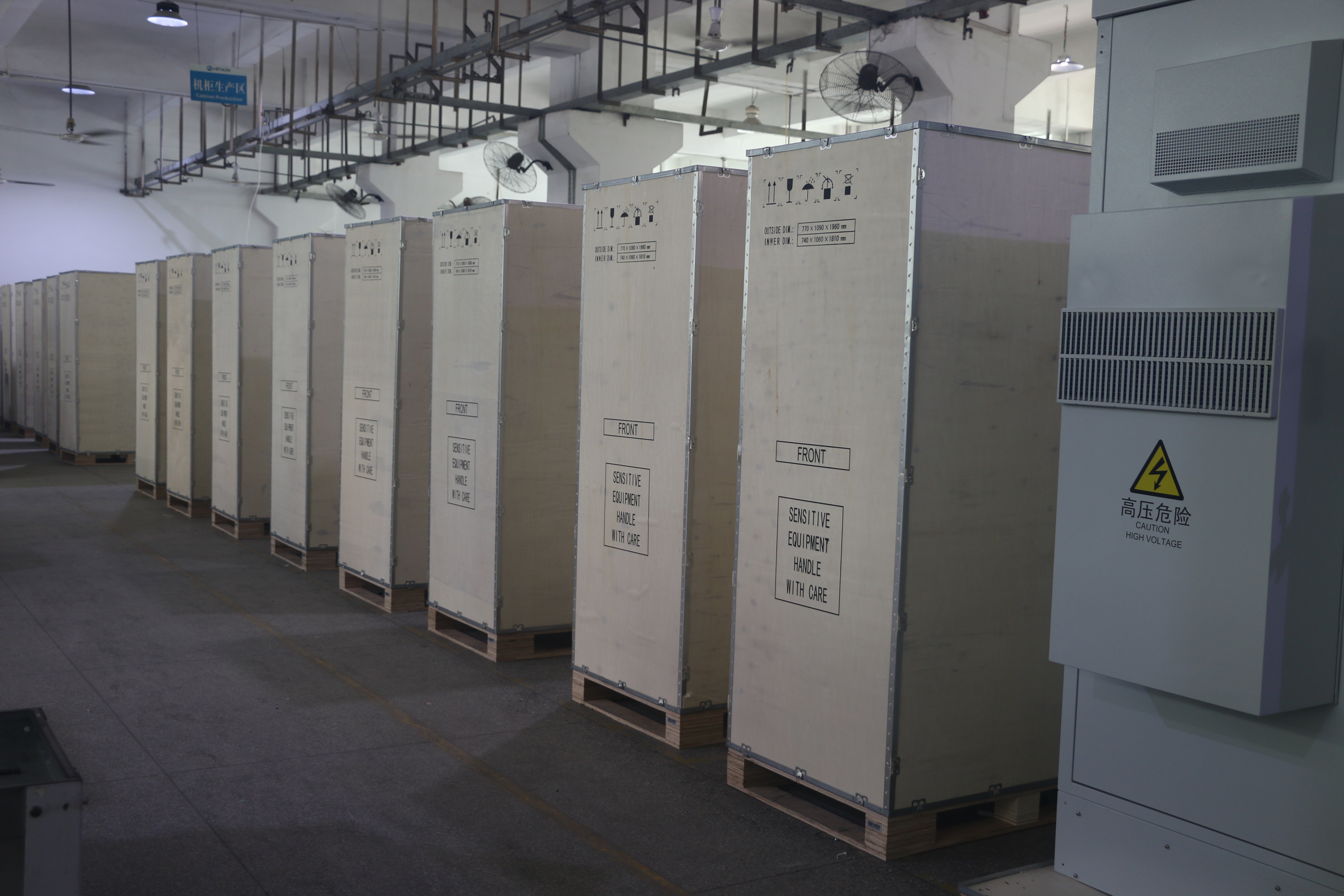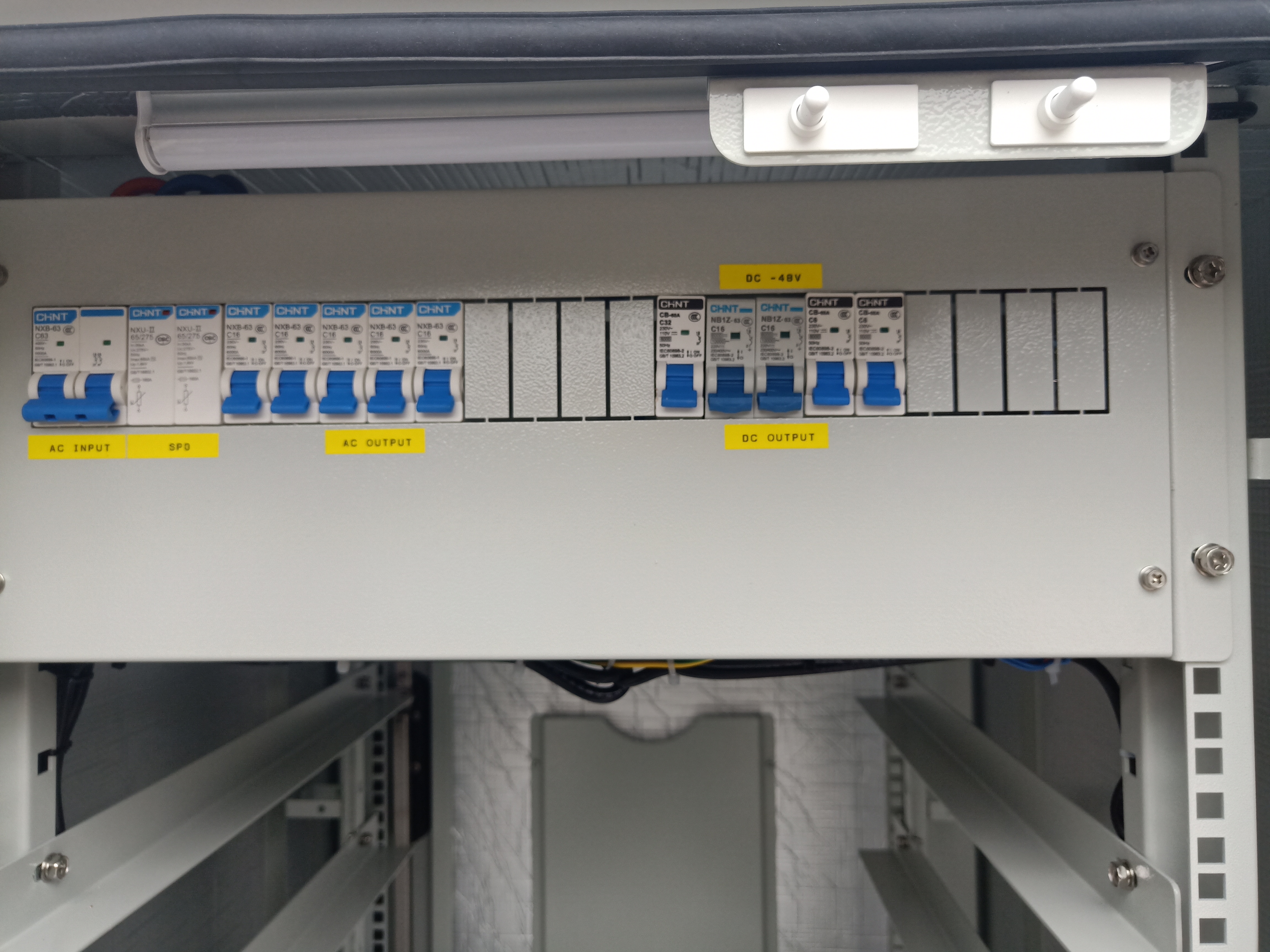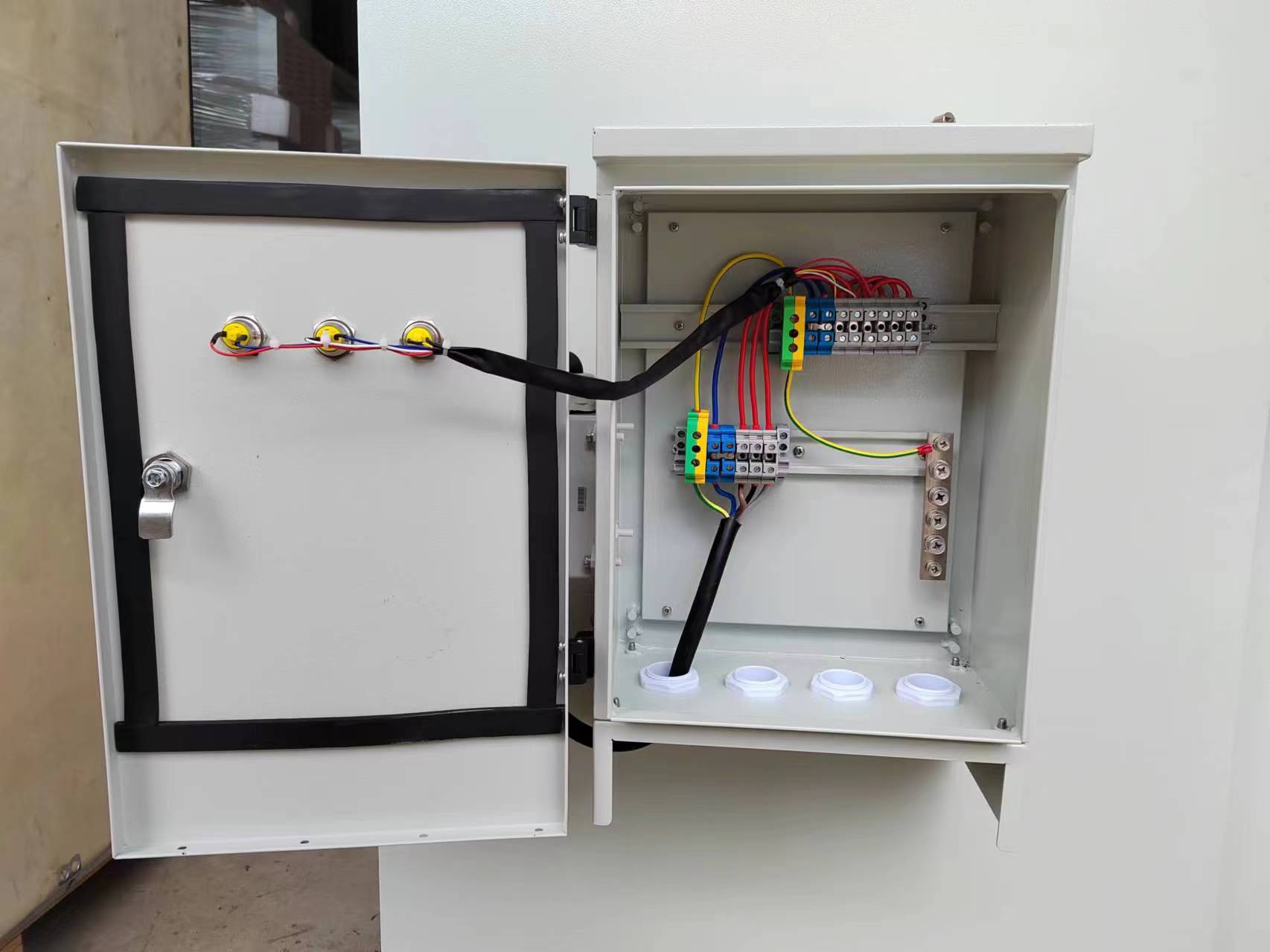Cool and Controlled: Outdoor Cabinets That Deliver

Outdoor communication cabinets face harsh conditions like extreme heat, cold, and humidity. Without proper cooling and temperature control, equipment inside these cabinets can overheat or fail. You need reliable solutions to maintain stable conditions and protect sensitive components.
Advanced cooling technologies are transforming this space. The global market for outdoor liquid cooling cabinets is expected to reach $1.5 billion by 2026, growing at a rate of 15.2% annually. Asia-Pacific leads this trend, holding over 50% of the market share. Governments worldwide are also pushing for energy-efficient designs, making these cabinets essential for modern infrastructure.
Key Takeaways
Outdoor cabinets shield equipment from bad weather, keeping it safe and cutting repair costs.
Good cooling systems stop overheating, help equipment last longer, and keep it working well.
Using strong materials like stainless steel or aluminum makes cabinets tougher and protects them from damage.
Modern monitoring tools check temperature and humidity instantly, lowering upkeep needs and avoiding expensive breakdowns.
Buying sturdy cabinets with good cooling saves money and boosts efficiency.
Understanding Outdoor Communication Cabinets
Definition and Purpose
An outdoor communication cabinet plays a vital role in modern infrastructure. It serves as a secure and weather-resistant enclosure for telecommunications equipment. These cabinets protect sensitive components from environmental hazards like rain, snow, and extreme temperatures. By shielding equipment from dust, moisture, and temperature fluctuations, they ensure the reliability of communication networks.
You’ll find these cabinets essential for wireless communication systems, including 5G networks. They safeguard telecommunication equipment from environmental threats, ensuring continuous operation. Additionally, they prevent risks such as theft and vandalism, maintaining the operational integrity of critical infrastructure. Without these cabinets, communication networks would face frequent disruptions and costly repairs.
Key Features and Design Elements
Outdoor communication cabinets differ from indoor ones due to their specialized design. They are built to withstand harsh conditions and provide long-term durability. Key features include:
Durability and Weather Resistance: These cabinets handle extreme temperatures, UV rays, and high winds.
Accessibility and Security: Easy-access doors with locking mechanisms allow only authorized personnel to enter.
Size and Capacity: Cabinets come in various sizes to meet different telecommunications needs.
Power and Cooling Systems: Built-in systems maintain optimal operation and protect against electrical issues.
The materials used in these cabinets also enhance their performance. For example:
Material | Advantages | Considerations |
|---|---|---|
Stainless Steel | Corrosion resistance, durability, and strength. | Cost may be higher, but it provides excellent protection. |
Aluminum | Lightweight, corrosion-resistant, and cost-effective. | May not be as durable as stainless steel. |
Powder-Coated Steel | Protection against corrosion, cost-effective. | Powder coating may wear over time. |
Fiberglass Reinforced Plastic | Lightweight, corrosion-resistant, good insulation. | May not be as strong as metal alternatives. |
Composite Materials | Customizable for specific requirements. | Cost and availability may vary. |
These features ensure that outdoor communication cabinets provide a secure and efficient environment for telecommunications equipment. They simplify maintenance, reduce downtime, and enhance the reliability of communication networks.
The Role of Cooling and Temperature Control

Risks of Overheating
Heat is one of the biggest threats to the equipment inside an outdoor communication cabinet. When temperatures rise, the components generate even more heat, creating a dangerous cycle. Without proper cooling, this heat can damage sensitive electronics like microprocessors and control units. Over time, these components age faster under heat stress, leading to malfunctions. Studies show that for every 10°C increase in temperature, the lifespan of electronic components is cut in half.
Unchecked overheating can also cause catastrophic failures. This leads to costly downtime and delays in critical operations. To avoid these risks, you need a cabinet with efficient cooling systems that remove excess heat and maintain stable internal temperatures.
Environmental Challenges
Outdoor environments present unique challenges for maintaining temperature control. High humidity can reduce insulation performance and increase the risk of electrical accidents. Ideally, humidity levels should stay below 60% and never exceed 80%. Dust is another major concern. It can accumulate on electronic components, reducing their efficiency and causing damage. Dust buildup also affects the performance of cooling systems, making it harder to regulate temperatures.
Extreme weather conditions, such as heatwaves or freezing temperatures, further complicate the situation. Cabinets must be designed to handle these environmental factors while keeping the equipment inside safe and operational.
Consequences of Poor Temperature Management
Failing to manage temperatures effectively can have long-term consequences for your equipment. Excessive heat accelerates the aging of electrical insulation, reducing the lifespan and performance of critical components. Semiconductor parts can experience thermal breakdown, leading to performance degradation or complete failure.
When cooling systems fail, the equipment inside the cabinet becomes vulnerable to heat damage. This results in frequent repairs, higher maintenance costs, and unplanned downtime. For industries relying on outdoor communication cabinets, these issues can disrupt operations and lead to significant financial losses. Proper temperature management ensures your equipment performs reliably and lasts longer.
Cooling and Temperature Control Technologies
Active Cooling Solutions
Active cooling systems provide precise temperature control for outdoor communication cabinets, especially in extreme environments. Air conditioners are a popular choice, using a vapor-compression cycle to lower temperatures and humidity levels. These systems ensure stable conditions for sensitive electronics. Thermoelectric coolers are another reliable option. They have no moving parts, require external power, and offer precise temperature regulation. Some models can even provide heating when necessary, making them versatile for various applications.
Closed-loop cooling systems are highly effective for protecting electronics from contaminants. They regulate internal temperatures within a range of 41°F (5°C) to 104°F (40°C). Telecom companies using these systems have reported a 30% reduction in failure rates due to improved temperature control and contamination prevention. Air/air heat exchangers are also worth considering. They use ambient air for cooling, which can reduce energy costs by up to 15% in urban settings.
Passive Cooling Mechanisms
Passive cooling mechanisms rely on natural processes to dissipate heat, making them energy-efficient and cost-effective. These systems are ideal for outdoor communication cabinets in moderate climates or low heat output environments. Techniques like heat sinks and natural ventilation help maintain safe temperatures without consuming energy.
Compared to active solutions, passive cooling has lower initial and operational costs. However, it may not handle high heat loads as effectively. Active systems excel in extreme conditions, but passive cooling is a sustainable choice for moderate environments. By choosing the right cooling method, you can balance energy efficiency and reliability based on your specific needs.
Advanced Monitoring and Automation
Modern outdoor communication cabinets benefit from advanced monitoring and automation technologies. These systems track temperature, humidity, and other environmental factors in real time. Automated controls adjust cooling mechanisms as needed, ensuring optimal performance. For example, sensors can detect rising temperatures and activate cooling systems before equipment overheats.
Remote monitoring capabilities allow you to manage cabinets from a central location. This reduces the need for on-site inspections and lowers maintenance costs. Predictive analytics can also identify potential issues before they escalate, minimizing downtime. By integrating these technologies, you can enhance the efficiency and reliability of your cooling systems.
Benefits of Temperature Management in Outdoor Communication Cabinets
Enhanced Equipment Performance
Effective temperature management ensures the operational stability of your equipment. Overheating can cause electronic components to fail, leading to costly repairs and interruptions. By maintaining optimal temperatures, you prevent these issues and keep your systems running smoothly. Closed-loop cooling systems are particularly effective. They protect electronics from dust, dirt, and humidity while maintaining internal temperatures between 41°F (5°C) and 104°F (40°C). This compliance with GR-3108-CORE Class 1 specifications ensures reliable performance.
Telecom companies using these systems have reported up to a 30% reduction in failure rates. This improvement translates into fewer disruptions and better service quality. When your equipment operates at peak efficiency, you can meet the demands of modern communication networks without compromise.
Extended Equipment Lifespan
Temperature control plays a critical role in extending the lifespan of your equipment. Excessive heat accelerates the aging process of electronic components, reducing their durability. By managing temperatures effectively, you slow down this wear and tear. This means your outdoor communication cabinet can house equipment that lasts longer and performs better over time.
Proper cooling also prevents thermal stress, which can damage sensitive parts like semiconductors. With advanced cooling technologies, you protect your investment and avoid premature replacements. This longevity not only saves money but also ensures your infrastructure remains dependable for years.
Reduced Maintenance and Downtime
Minimizing maintenance and downtime is essential for cost-effective operations. Temperature management reduces the need for frequent repairs by preventing heat-related damage. Modular designs and easy accessibility further simplify maintenance tasks, allowing technicians to resolve issues quickly.
Feature | Benefit |
|---|---|
Cost Savings | Reduces the need for frequent repairs and replacements, contributing to cost-effectiveness in network maintenance. |
Efficient Maintenance | Easy accessibility and modular design simplify maintenance tasks, minimizing downtime. |
When your systems require less maintenance, you save time and resources. This efficiency ensures uninterrupted operations, which is vital for industries relying on outdoor communication cabinets.
Applications of Outdoor Communication Cabinets

Telecommunications
Outdoor communication cabinets are vital for modern telecommunications. They house critical networking equipment, ensuring robust connectivity and supporting the growing demand for mobile data. These cabinets play a key role in the rollout of 5G technology, enabling faster and more reliable communication networks. By protecting sensitive equipment from environmental hazards, they ensure uninterrupted service and reduce the risk of costly downtime.
You’ll find these cabinets essential for maintaining network stability in outdoor and remote locations. They also prevent theft and vandalism, safeguarding your investment. With their ability to accommodate advanced cooling systems, these cabinets ensure optimal performance even in extreme conditions.
Key applications in telecommunications include:
Housing critical networking equipment.
Facilitating robust connectivity.
Supporting mobile data consumption.
Enabling the rollout of 5G technology.
Transportation and Traffic Management
In transportation, outdoor communication cabinets provide secure environments for equipment critical to traffic management systems. They ensure reliable communication networks, which are essential for coordinating traffic signals, monitoring road conditions, and managing public transportation systems.
These cabinets are designed to withstand harsh outdoor conditions, ensuring uninterrupted operation in remote sites and urban areas alike. Their modular designs make maintenance easier, reducing downtime and ensuring smooth traffic flow.
Application Type | Description |
|---|---|
Telecommunication networks | Essential for establishing reliable communication networks in transportation. |
Transportation infrastructure | Provides secure environments for equipment crucial for traffic management. |
Remote sites | Ensures communication reliability in various outdoor settings. |
By integrating these cabinets into transportation systems, you can enhance safety, reduce congestion, and improve overall efficiency.
Energy and Utilities
Outdoor communication cabinets play a crucial role in the energy and utility sectors. They protect telecommunication equipment from environmental hazards, ensuring continuous operation. This reliability is essential for managing renewable energy installations, monitoring power grids, and supporting smart city infrastructure.
These cabinets also offer cost savings by reducing the need for frequent repairs and replacements. Their secure designs prevent theft and unauthorized access, safeguarding critical infrastructure. Remote monitoring capabilities further enhance efficiency, allowing you to manage equipment without physical site visits.
Key benefits include:
Ensuring continuous operation of telecommunication equipment.
Reducing maintenance costs through reliable protection.
Preventing theft and vandalism with secure locking mechanisms.
Enabling remote monitoring and management.
By choosing the right outdoor communication cabinet, you can optimize performance and ensure the longevity of your energy and utility systems.
Industrial and Commercial Use Cases
Outdoor communication cabinets play a pivotal role in industrial and commercial environments. These cabinets provide secure housing for critical equipment, ensuring smooth operations in demanding settings. You’ll find them indispensable in industries like manufacturing, retail, and logistics.
Key Applications in Industrial Settings
In industrial facilities, outdoor cabinets protect equipment used for automation, monitoring, and control. They shield sensitive devices from dust, moisture, and temperature fluctuations. This protection ensures uninterrupted operations and reduces the risk of costly downtime.
Factory Automation: Cabinets house programmable logic controllers (PLCs) and sensors that manage production lines.
Energy Monitoring: They safeguard equipment that tracks energy consumption and optimizes efficiency.
Process Control: Cabinets protect systems that regulate temperature, pressure, and other variables in industrial processes.
Tip: Choose cabinets with advanced cooling systems to prevent overheating in high-temperature environments.
Commercial Use Cases
In commercial settings, outdoor cabinets support communication networks and security systems. They ensure reliable connectivity and protect equipment from environmental hazards.
Retail: Cabinets house networking equipment for point-of-sale systems and inventory management.
Logistics: They protect devices used for fleet tracking and warehouse management.
Smart Buildings: Cabinets support systems for lighting, HVAC, and security.
Benefits for Industrial and Commercial Users
Benefit | Description |
|---|---|
Enhanced Reliability | Protects equipment from environmental damage, ensuring consistent performance. |
Cost Savings | Reduces maintenance needs and extends equipment lifespan. |
Scalability | Modular designs allow you to expand as your needs grow. |
By investing in high-quality outdoor communication cabinets, you can improve efficiency and safeguard your operations. These cabinets deliver the durability and functionality you need to thrive in industrial and commercial environments.
Cooling and temperature control are essential for outdoor communication cabinets. These systems dissipate heat, prevent condensation, and protect equipment from extreme weather. Features like thermostats, sensors, and insulation ensure stable conditions, reducing the risk of malfunctions. Telecom companies using closed-loop cooling systems have seen up to a 30% drop in failure rates, proving their reliability.
Advanced cooling technologies also cut energy costs and extend equipment lifespan. For example, thermoelectric coolers increase battery backup life by 25%. When choosing a cabinet, prioritize these features to enhance performance and minimize downtime. Reliable cooling ensures your equipment stays protected and operational.
FAQ
What is the primary purpose of cooling systems in outdoor communication cabinets?
Cooling systems prevent overheating by maintaining stable internal temperatures. They protect sensitive electronics from heat damage, ensuring reliable performance and extending equipment lifespan. Without proper cooling, your equipment could fail, leading to costly repairs and downtime.
How do passive cooling mechanisms differ from active cooling solutions?
Passive cooling uses natural processes like ventilation or heat sinks to dissipate heat. It’s energy-efficient and cost-effective. Active cooling, such as air conditioners or thermoelectric coolers, provides precise temperature control. Active systems work better in extreme conditions, while passive methods suit moderate climates.
Can advanced monitoring systems reduce maintenance costs?
Yes, advanced monitoring systems track temperature and humidity in real time. Automated controls adjust cooling as needed, preventing overheating. Remote monitoring reduces on-site inspections, saving time and money. Predictive analytics also help you address issues before they escalate, minimizing downtime.
What materials are best for outdoor communication cabinets?
Stainless steel offers excellent durability and corrosion resistance. Aluminum is lightweight and cost-effective. Fiberglass-reinforced plastic provides good insulation and is corrosion-resistant. Choose a material based on your environment and budget to ensure long-lasting performance.
Why should you prioritize cooling features when selecting a cabinet?
Cooling features protect your equipment from heat damage, ensuring uninterrupted operations. Advanced cooling systems also reduce energy costs and extend equipment lifespan. By prioritizing these features, you enhance reliability and minimize maintenance, saving money in the long run.
Tip: Always evaluate your environmental conditions before choosing a cooling system for your cabinet.
See Also
How to Protect Equipment with Outdoor Telecom Cabinet
What Outdoor Telecom Cabinets Need to Last
Perfect Outdoor Enclosures: Always Reliable
How to Determine the Ideal Size for Your Telecom Cabinet
Optimizing Outdoor Cabinets with Power, cooling and Monitoring
CALL US DIRECTLY
86-13752765943
3A-8, SHUIWAN 1979 SQUARE (PHASE II), NO.111, TAIZI ROAD,SHUIWAN COMMUNITY, ZHAOSHANG STREET, NANSHAN DISTRICT, SHENZHEN, GUANGDONG, CHINA

